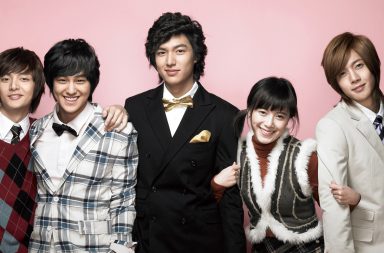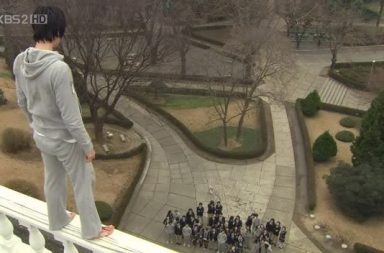“We seek the girl with one shoe,” they shouted as they elbowed the palanquin through the crowd.
“It’s [Pear Blossom]!” Peony pointed at her sister.
“She’s lost her shoe.”
“The magistrate has come to arrest you for stealing!” Omoni shook Pear Blossom. “NOW you’ll get what you deserve.”
“Then she must deserve me as a husband,” said the magistrate, “for this lucky shoe has led me to her.”
Pear Blossom slipped the sandal on her foot.
When springtime came the magistrate sent a go-between to Pear Blossom’s old father to arrange a grand marriage. Pear Blossom’s wedding slippers were of silk, and in the courtyard of her splendid new house, a dozen pear trees bloomed.
–The Korean Cinderella, Shirley Climo
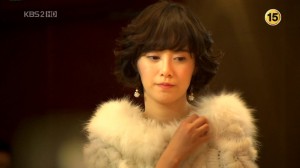 In most cultures, the Cinderella story is pervasive. It is a constant reminder that if you do good things, then good things will happen to you. If you work hard and triumph over your hardships, then a charming prince will scoop you onto his well-groomed horse and save you from your miserable life. In American popular culture, the modern interpretation of the Cinderella story is reflected in films like Pretty Woman, She’s All That, and several other examples from the ’80s, ’90s, and today. While American film and television has shifted away from the cliched Cinderella concept and has set its cap on blockbusters, cop dramas, and reality television, Korean dramas like Boys Over Flowers, Secret Garden, and Shining Inheritance still ride the trend of Cinderella stories that star rich men who make over the girls they love and fight their parents to do so.
In most cultures, the Cinderella story is pervasive. It is a constant reminder that if you do good things, then good things will happen to you. If you work hard and triumph over your hardships, then a charming prince will scoop you onto his well-groomed horse and save you from your miserable life. In American popular culture, the modern interpretation of the Cinderella story is reflected in films like Pretty Woman, She’s All That, and several other examples from the ’80s, ’90s, and today. While American film and television has shifted away from the cliched Cinderella concept and has set its cap on blockbusters, cop dramas, and reality television, Korean dramas like Boys Over Flowers, Secret Garden, and Shining Inheritance still ride the trend of Cinderella stories that star rich men who make over the girls they love and fight their parents to do so.
 But how realistic is this trope that South Korea is teeming with rich men just waiting for a poor, hot-tempered but hardworking orphan girl to steal his heart? If I went to Korea this moment, how many chaebols would I meet on the street just anticipating to fall in love with poor little ol’ me? Of course the answer is probably zero, but the question of how closely art imitates reality is a pertinent one, especially when this K-drama cliche is so ubiquitous. In reality, Korean customs of dating and marriage are much more complicated, tied together by notions of social status, education, and family name. So when you see those crazy parents in K-dramas going the extra evil mile to keep their son away from the girl that he loves, you’re seeing a partial reflection of Korean society–a reflection that may be familiar to Korean viewers who understand the culture, but are lost to an international viewership unaware of Korean traditions.
But how realistic is this trope that South Korea is teeming with rich men just waiting for a poor, hot-tempered but hardworking orphan girl to steal his heart? If I went to Korea this moment, how many chaebols would I meet on the street just anticipating to fall in love with poor little ol’ me? Of course the answer is probably zero, but the question of how closely art imitates reality is a pertinent one, especially when this K-drama cliche is so ubiquitous. In reality, Korean customs of dating and marriage are much more complicated, tied together by notions of social status, education, and family name. So when you see those crazy parents in K-dramas going the extra evil mile to keep their son away from the girl that he loves, you’re seeing a partial reflection of Korean society–a reflection that may be familiar to Korean viewers who understand the culture, but are lost to an international viewership unaware of Korean traditions.
Korean marriages are regarded as more than just a union between two people; they’re considered a union between two families. And because the taking of a spouse is so strongly tied to family, marriage isn’t taken lightly. In fact, many parents in Korea seek out the help of professional matchmakers who specialize in finding suitable life mates for their children through analyzing resumes and family history. Matchmakers set up meetings between two candidates, who then decide if they like each other enough to date and finally marry. Sounds pretty boring when compared to the body-swapping, tear-jerking love story that was Secret Garden, huh?
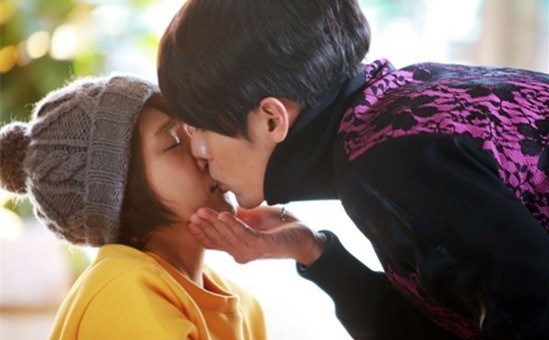 In the past, meetings organized by matchmakers and parents were more likely to lead to marriage with or without the approval of the children. But these days, the bride and groom have much more say than they did before. So K-dramas are on the right track when they portray marriage as a process that involves a parent’s heavy hand, but exaggerates the power that parents hold. That’s not to say that chaebol sons have the freedom to marry whomever they want. In actuality, the fact that many parents arrange meetings with potential brides, in essence, weeds out the “unsuitable” girls. No parent will bring to the table a young woman who is lower than her son in social standing. In K-dramas, the cliche of rich sons falling in love with poor girls may be unrealistic, but the potential parental fallout is not. It’s not hard to imagine chaebol sons being strongly encouraged to marry the daughters of business executives, especially if it means keeping peace with overbearing parents.
In the past, meetings organized by matchmakers and parents were more likely to lead to marriage with or without the approval of the children. But these days, the bride and groom have much more say than they did before. So K-dramas are on the right track when they portray marriage as a process that involves a parent’s heavy hand, but exaggerates the power that parents hold. That’s not to say that chaebol sons have the freedom to marry whomever they want. In actuality, the fact that many parents arrange meetings with potential brides, in essence, weeds out the “unsuitable” girls. No parent will bring to the table a young woman who is lower than her son in social standing. In K-dramas, the cliche of rich sons falling in love with poor girls may be unrealistic, but the potential parental fallout is not. It’s not hard to imagine chaebol sons being strongly encouraged to marry the daughters of business executives, especially if it means keeping peace with overbearing parents.
All of this reminds me of a scene in Boys Over Flowers, when the down-and-out female lead, Geum Jan-di asks her chaebol love interest, Gu Jun-pyo:
Jan-di: “Why me? I’m not pretty, and I don’t have money, a distinguished name, or anything. Why did you like me?”
Jun-pyo: “Because I have all that.”
Jan-di: “What?”
Jun-pyo: “Money, name, looks — I have all that. I don’t need that from you. All you have to be is Geum Jan-di.”
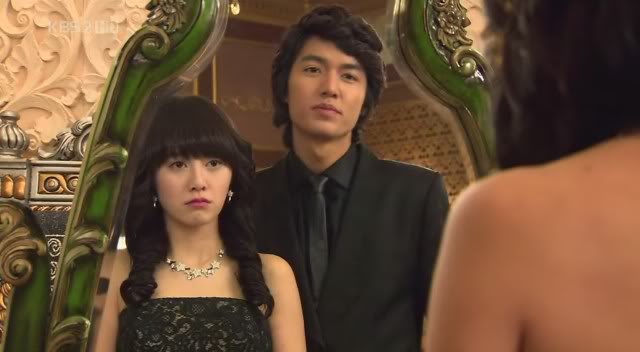 Sure, it’s not the most romantic of quotes, but it’s an example of the physical insecurities Korean women (and frankly, women in general) face in regards to finding a significant other. And in South Korea, the emphasis on female looks and presentation is much more pronounced. Past studies have indicated that Korean men, in fact, do place a very high value on the beauty of a potential wife, no matter how many times Korean dramas seem to imply that they don’t. In 2009, a survey was conducted revealing that 1 out of 5 women between the ages 19 and 49 admitted to undergoing plastic surgery, and that younger women do it to look more presentable for the marriage market. The pressure to conform to beauty standards is exacerbated by the notion that it’s difficult to find “good groom material”: a man with a good salary, education, and hopefully a good temperament.
Sure, it’s not the most romantic of quotes, but it’s an example of the physical insecurities Korean women (and frankly, women in general) face in regards to finding a significant other. And in South Korea, the emphasis on female looks and presentation is much more pronounced. Past studies have indicated that Korean men, in fact, do place a very high value on the beauty of a potential wife, no matter how many times Korean dramas seem to imply that they don’t. In 2009, a survey was conducted revealing that 1 out of 5 women between the ages 19 and 49 admitted to undergoing plastic surgery, and that younger women do it to look more presentable for the marriage market. The pressure to conform to beauty standards is exacerbated by the notion that it’s difficult to find “good groom material”: a man with a good salary, education, and hopefully a good temperament.
K-drama Cinderella stories are so popular because they offer a spotlight on women who are unconventional in their lack of riches, their plain looks, and their low social standing. The female protagonists are able to be themselves, flaws and all, and still win the guy in the end. And while K-dramas are able to tell this story, unfortunately Korean society tells a different story that makes it much more difficult for chaebols and poor girls to meet and live a happily ever after.
(The New York Times [1] [2], Kendall, Laurel. Getting Married in Korea. Berkeley: University of California Press, Ltd., 1996)

